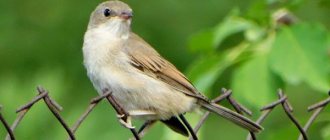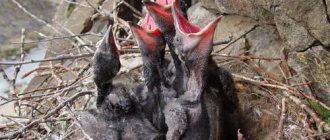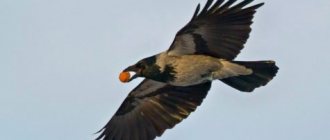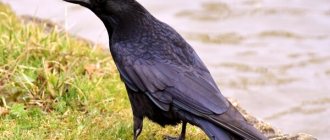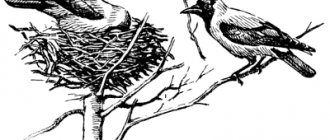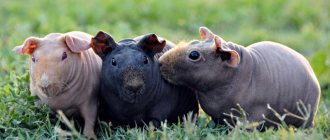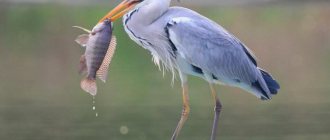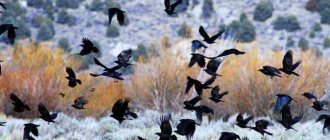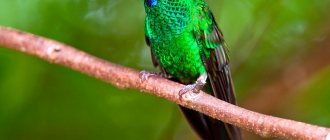Origin of the species and description
Photo: Gray Crow
The hooded crow is a separate species of the genus of ravens and the family of corvids. Sometimes it, along with the black crow, is classified as a subspecies of crows. As a genus, crows are very diverse and include 120 different species.
These include:
- all the crows that live in different parts of the world;
- jackdaws;
- jays;
- kukshi;
- rooks.
The first fossils that showed similarities to corvids were found in Eastern Europe. They are dated to the Middle Miocene - approximately 17 million years ago. Corvids first developed in Australasia, but soon, being nomadic birds, they scattered throughout the world, successfully adapting to various living conditions.
Video: Gray Crow
Scientists argue about the taxonomy of birds in the family. The boundaries between related species are blurred, so some experts argue that there should be more species, while others argue for fewer. Some classifications based on DNA analysis include birds of paradise and larvae among corvids.
Interesting fact: Contrary to popular belief, magpies and crows are not related birds.
Charles Darwin, ranking species according to the hierarchy of intelligence, placed corvids in the category of the most evolutionarily developed birds. Corvids exhibit high learning abilities, are aware of social bonds within a flock, have high intelligence, and some species can speak, parodying human speech or imitating other sounds that they remember.
The image of a raven in culture
The raven is a unique and unrepeatable, mysterious and very intelligent bird. That is why many creators of beauty dedicated their works to this bird. The image of the raven is widely explored in mythology, literature, music, cinematography and even in games. I would like to present to your attention a fable by Ivan Andreevich Krylov, which is called “The Crow”.
“Crow” by I.A. Krylov When you don’t want to be ridiculous, stick to the title you were born into. The commoner is not related to the nobility: And if he was made a dwarf, Then don’t try to become a giant, But remember your height more often, Sticking her tail with a peacock feather, The Crow and Peahens went for a walk arrogantly - And she thinks that her relatives and her former friends will all stare at her , how amazing; That she is a sister to all the peacocks and that her time has come to be an adornment of Junon’s court. What was the fruit of her arrogance? That she was plucked all around by peahens, and that, having almost toppled over from them, not to mention someone else’s, she had few feathers of her own left. She was back to her people; but they didn’t recognize the pecked Crow at all, they plucked the Crow enough, and her plans ended with the fact that she fell behind the Crows and did not stick to the Peahens. I'll explain this fable to you. Matryona, the merchant's daughter, had the idea to join noble relatives. Her dowry is half a million. So they gave Matryona away as a baron. What happened? Her new relatives prick her in the eye with the reproach that she was born a bourgeois. And the old one for being entangled with the nobles: And my Matryona became neither Pava nor Crow.
Appearance and features
Photo: What a hooded crow looks like
Hooded crows have minimal sexual dimorphism - males are slightly larger than females, but without a detailed examination this aspect is not noticeable. The male can weigh from 465 to 740 grams, the female - approximately 368-670 grams. The body length of both sexes is the same - about 29-35.5 cm. The wingspan also does not vary depending on the sex - 87-102 cm.
Hooded crows have a large black beak, approximately 31.4-33 mm long. It has an oblong tapering shape and is slightly pointed at the end. The beak is thick and can withstand blows to hard fruits and tree bark. Its tip is slightly curved down to hold berries or nuts. The hooded crow's tail is short, approximately 16-19 cm. Together with the wings, it forms a streamlined body shape. The crow can spread its tail feathers when planning flight and landing, and the tail also plays an important role in the sign language of these birds.
In color, hooded crows are extremely similar to common magpies. The crow's body is gray or white, and the head, chest, wing edges and tail are covered with black feathers. The eyes are also coal-black, small, merging in color with the feathers. Crows have a small head and a large abdomen. This makes them not the most agile birds in flight. But they have strong, short, black legs. The toes are spread wide and long, which allows crows to walk, run and jump on the ground and along tree branches. Each finger has long black claws, which also help crows hold food.
How people look at ravens
Long gone are the times when these birds were considered guides to the other world. For the Romans and Greeks it was sacred and was considered the bird of the god Apollo. Among the Vikings, he was a faithful friend of the supreme god Odin; among our ancestors, he was a predictor of the future and things as a bird. After the reign of Christianity in Europe, the raven became a minion of the devil, and its habit of feeding on carrion became disgusting on the battlefields or thousands of gallows with the corpses of heretics.
Nevertheless, the kruk bird was revered for its wisdom even in the most developed countries of Europe at that time. The raven is the symbol of the crown of the British Empire. A flock of birds still lives in the Tower of London, with allocated funds for food. Birds began to migrate en masse from human homes after the invention of firearms, as people shot them and hung their carcasses on tree branches. The raven is emotional, social and intelligent. The sight of the corpses of his relatives puts him in a state of shock.
Black crows returned to cities about two hundred years ago. People became more restrained, no one shot birds anymore, there were mountains of garbage all around, and life was in full swing and seething. They have remained there to this day.
Photo of a black raven
Where does the gray crow live?
Photo: Gray Crow in Russia
Hooded crows are an extremely common bird species. They live in Central and Eastern Europe and also in some Asian countries. Such crows are found less often in Western Siberia, but in the eastern part there are no such birds at all - only black crows live there.
Hooded crows are widespread in the European part of Russia. They live both within the city and in forests. Gray crows settle almost everywhere and are unpretentious in their habitat. They only avoid steppes and tundra, where there are no trees and, therefore, nowhere to build a nest.
Crows also avoid severe low temperatures. Under these conditions, birds cannot obtain food for themselves, so northern gray crows lead a nomadic lifestyle. But gray crows do not fly long distances, but, with the arrival of winter, they only fly to more southern regions, returning to their usual habitat in the spring.
Crows living in warm climates do not fly at all. In winter, hooded crows often settle in cities and villages. They choose places under roofs next to heating and warm up between rare flights for food. Nests are built both on houses and in trees.
Hooded crows get along well with their smaller relatives – rooks and jackdaws. Together they can be found in city parks, under the roofs of houses and in more secluded places. In winter, crows often go to garbage cans to feed.
Now you know where the gray crow lives. Let's see what she eats.
This name unites several species of birds. They are similar, and many members of the species are confused with each other. Crows include: crow, rook, jackdaw and raven.
2. Most people consider crows and crows to be one bird. But these are representatives of different species, and not males and females from the same family. The difference is not striking, but quite noticeable: the raven is a larger individual, the body length is 10-15 cm longer than that of the “black” or “gray” crow, and the raven has a darker color.
3. Crows are one of the smartest birds. When it comes to intelligence, these birds, according to scientists, respond better than dolphins and chimpanzees.
4. Research conducted by American scientists has shown that crows are able to easily solve logical problems at the development level of a 5-year-old child.
5.Crows live in all corners of the world. They easily get along in both snowy and desert conditions, both in deserts and in forests.
Black Crow
6. Crows are capable of making friends. If trouble happens to a bird, its friends will definitely come to the rescue. They will take care of their wounded friend and bring him food until the bird fully recovers.
7. Crows are able to remember and transmit information through generations. This is mainly observed in cases of resentment. There is confirmation that several years later, and having covered hundreds of kilometers, a flock of crows flew to the offender.
8. The ability to “read gestures” made it possible for crows to imitate the sounds of nature and animals. Thus, by imitating the call of a fox or wolf, birds can scare away other predators from their prey.
9. Crows perfectly remember places and situations that ended in victims on their part. They avoid these places, even change their migration routes.
10. Crows are able to calculate in advance the actions of others and adjust their own accordingly. The habit of crows to store supplies is well known to many. Of course, many other animals can do this too. But the crows went much further in the art of measures and countermeasures. If one crow tries to hide something, there are several interested observers nearby. Then the first one, hiding, pretends that she has just buried something, and at that moment hides her goods on her chest between the feathers. And quickly flies to another place. Observers quickly see through such tricks; they instantly lose interest in the “burial” place and follow the real “treasure”. These races, competitions in secrecy can continue for a very long time and reach unprecedented proportions.
11. Crows are faithful spouses. As soon as the chick can take care of itself, it must leave the parent's nest. The crow joins the “solitary crows” and the bird will live in this flock of relatives until it has a second half. From this moment on, the crows leave the flock to live with their partner, remaining faithful to him even after the death of their spouse.
12. There is another strange thing in the behavior of birds: when a crow dies, its comrades hold a memorial service. Having discovered the body of a dead bird, they fill the space with heartbreaking cries for fifteen minutes, when on command the birds become silent, sit on the branches and are mournfully silent. Modern researchers cannot explain this phenomenon.
13. According to the myths of Tibet and Greece, ravens act as messengers of the gods.
14. In China, it was believed that crows caused bad weather, by the will of the gods, to warn people of impending danger.
15. To get bugs and larvae from under tree bark, crows use twigs, thereby protecting their beak from damage. Parents do not teach chicks how to make such specialized devices. This skill is transmitted in these birds at the genetic level.
16. City crows love games, they are not afraid of dogs and cats.
17. If a crow finds dry bread, it will not immediately eat rough food. The bird will look for a source to soften its prey. Any puddle is suitable; the bird will wait until the crust softens.
18. Scientists once tested crows for intelligence. The participants were offered two vessels (one containing water and the other a filler). There were large and small stones lying here. The crows completed the task with ease. The birds accurately selected stones of the required size and threw them into a container of water. Gradually the water rose to the required level so that the birds could quench their thirst. But the crows did not pay attention to the vessel with sand. The birds somehow distinguished stones that would sink to the bottom from useless light objects.
19. Crows living in captivity can learn to speak better than some parrots.
20. In the wild, crows often imitate wolves and foxes. By imitating their call, crows often manage to scare them away from their prey and feast on the leftovers.
21. Crows use mirrors to find hidden treats. Moreover, it is easy to find a “feedback” between the mirror image and reality.
22. In winter, people often watched birds sliding from the ice mountain and church domes.
23. Crows have become excellent at using the anthropogenic environment for their own purposes. They know that the best way to break nuts is by throwing them onto hard asphalt. Moreover, they throw nuts not just on the ground, but also under the wheels of cars. Moreover, the speed of the vehicle is calculated. And then they know that you can only pick up a broken nut at a red traffic light, when the cars are stopped.
24. Crows are able to adopt and emulate the sounds of car engines, toilet flushes and animal cries.
25. The fact that crows are very intelligent is also evidenced by this fact: when there is impending danger for their chicks, crows can throw stones from their nests directly at people.
26. Crows also clearly know that they can get food from garbage cans. But usually the bins are tightly closed, but their contents become accessible after workers arrive and are loaded into a garbage truck. So crows perfectly remember the schedules and routes of such equipment and use this knowledge.
27. Crows are able to communicate without sound signals. According to research conducted in Austria, crows are able to demonstrate a variety of gestures using their beaks.
28. Crows read information transmitted by beak vibrations. In addition, an individual flock may have its own sign language, which will be understood only by members of a small community.
29. It turns out that our winged friends recognize numbers, that is, they have the ability to count and are able to solve problems. For example, if you put two bowls of food in front of a crow, and add at least 2-3 more grains to one, then the bird will unmistakably choose the bowl with more grains. It is noteworthy that not a single person is able to perform this action correctly.
30. The same experiment was conducted with crows. The bird was placed in a box with a small drawer containing a large piece of tasty meat. Nearby there was a second box with a long stick and a small stick. It was impossible to remove the meat from the box with a small stick. The crow didn’t think about the problem for long, she took out the big one with a small stick, and then got her meat!
31. Crows, having discovered an anthill, begin to roll around on it and sort through the feathers. This is done so that more ants get under the feather cover. This behavior is not entirely clear, however, one theory says that the crow does this in order to soothe the skin after molting and sprouting new feathers.
32. In the forest, crows often play with predators; people have observed how the birds chased a fox, a wolf or an otter.
33. Crows also love team games. One of the birds holds some small object in its beak, it could be a stick, a cone or a stone. The crow flies high and passes the “pass” to another player. This continues until the toy is on the ground.
34. The Celtic goddesses of war often took the form of crows during battles.
35. In some Indian tribes, ravens were worshiped as separate deities.
36. Crows are unpretentious in their diet. They eat everything: fish, meat, tree fruits, carrion and even garbage.
37. Another dietary feature has been noticed. Young animals prefer to get food in a flock, realizing that together it is easier to scare away or take away their prey from other animals. Older individuals prefer to feed separately or with their own family.
38. According to researchers, crows have a developed analytical sense, and the ability to receive information is not inferior to primates.
39. The playfulness of crows was noticed by Native Americans. Crows are able to ride on snowy hills solely for the purpose of entertainment.
40. And crows can also “mischief” other birds. They can destroy other people's nests, steal a couple of laid eggs.
Hoodie
41. Like any living creature that spends time in a flock, crows are forced to use speech. The way of communication lies in their characteristic sound imitations. To the human ear, the language of crows sounds like variations of the sound "kar". However, for these birds, sound has different meanings: tones indistinguishable to humans determine signs of danger, anxiety, compassion, joy and other emotional shades and transmitted information.
42. The following experiment was carried out, which included, in addition to the crows Adele and Betty, a small basket hidden in a larger vessel and a couple of wires. At the same time, 2 wires were prepared for Adele and Betty, one of which had a hook, and the second was straight. Adele immediately chose the bent one from two pieces of wire. Betty thought about her straight piece and carefully folded it too and pulled out her basket. It is worth noting the interesting fact that the crows saw the wire for the first time.
43. The French believed that ravens were the reborn souls of wicked monks and nuns.
44. In Germany, crows were believed to have a demonic origin.
45. In Sweden, the night rattle of a crow was associated with the curse of a restless soul.
Raven black
46. If danger approaches, crows can drop a nut, stone or other object on a person or animal, thereby ensuring safety for themselves and their offspring.
47. In Denmark they believed that ravens drive out evil spirits and if you look at them at that moment, you can turn into a crow.
48. Crows are extremely playful. You can often see crows playing with other animals. In the game, the crow can use sticks, cones, balls and other objects that it finds nearby.
49. Crows living in cities have learned to easily get their own food, sometimes using rather cunning methods to deceive people.
50. The life cycle of a crow is from 17 to 40 years. It all depends on living conditions and diet. Oddly enough, birds living in captivity have a longer life expectancy. Moreover, they get used to a person, and if he takes care of the bird properly, then in gratitude it will protect him.
photo from the Internet
What does the gray crow eat?
Photo: Hoodie bird
Hooded crows can be called omnivorous birds, although their stomachs are mostly adapted to digesting plant foods.
Their daily diet consists of the following ingredients:
- grains, nuts;
- various tree fruits and roots;
- vegetables, fruits that can be dragged from gardens;
- small rodents - mice, baby rats, shrews. Less often - moles;
- beetles and larvae, earthworms;
- eggs of other birds - hooded crows willingly destroy other people's nests;
- carrion - they do not hesitate to eat dead animals or finish eating after other predators;
- garbage - urban hooded crows often rummage through garbage cans.
Crows have the amazing property of hunting underground insects. They especially love the larvae of the May beetle: when they fly to fields where there are many beetles, they do not start digging the ground, looking for food. They “hear” where the beetle is and with their beak they deftly pull it out of the ground, sometimes helping themselves with their tenacious paws. They can bury their beak into the ground up to 10 cm.
While in the garbage area, crows tear open plastic bags and take out the food they like. They do not rush to eat it on the spot, but fly away, holding a piece in their beak or paws to eat it in the nest.
Interesting fact: Hunters talk about cases when flocks of gray crows in the forest drove hares, pecking them in the head.
Sometimes hooded crows can hunt small birds. This phenomenon is especially frequent in winter, during times of famine - crows attack sparrows, tits and swifts. Sometimes they can attack squirrels and chipmunks. Hooded crows that live in coastal areas can take caught fish from seagulls.
Attachment to a person
These are very smart birds that can be kept at home. A raven can be tamed and trained, but the process can cause significant difficulties if done incorrectly. The bird is quite aggressive, has a good memory, so it can take revenge on the offender. The raven becomes strongly attached to its owner for life, but at the same time it is very jealous and does not agree to share his love with others.
The powerful beak and sharp claws of the bird are very dangerous for small children. It is not advisable to leave them alone. The same beak and claws can cause damage to household items and furniture, wallpaper and electronics. It is very important to control the cleanliness of the cage and the bird itself - the raven has a not very pleasant smell that can spoil the air in the entire house.
With all the precautions, keeping a raven in the house brings many pleasant moments. This is original and unusual, and an extremely wise bird settles nearby, which may well learn to talk. This is a very loyal companion who will never leave his owner in a difficult situation.
Features of character and lifestyle
Photo: Hoodie in flight
Crows are diurnal birds. In the morning they fly away in search of food. The flock does not have a specific territory, so crows can fly extremely far in search of food. But in the evening all the birds gather again in the common nesting place. Birds also take breaks together between searching for food. After the birds have eaten, they gather together again to rest. These are very social creatures that live exclusively within a group.
Researchers noticed that before going to bed, the birds gather, but do not sleep, but seem to talk to each other. Scientists have come to the conclusion that gray crows are prone to exchanging emotions - they understand that they belong to a flock and recognize themselves as part of a team. Therefore, such “communication” is part of the daily ritual.
It has also been proven that gray crows are able to empathize with the death of a relative. If they discover that one of their flock has died, the crows circle over the body for a long time, descend and caw. This ritual is similar to “mourning” - crows realize the death of a relative, understand the finitude of life. This is further proof of the unsurpassed intelligence of these birds.
Crows walk slowly, although they can run and jump quickly. They are inquisitive and playful, which is why some people keep hooded crows as pets. Crows love to gain altitude and dive towards the ground at high speed. They also swing on branches and wires, deliberately rattle slate, tin cans and other “noisy” objects.
Crows also demonstrate intelligence in their methods of obtaining food. If the crow cannot crack the nut, it will use tools - pebbles - to try to get the tasty fruit. Scientists conducted experiments during which it was revealed that crows can count. Five people entered the room where the crows lived. Three or four of them came out, but the crows did not return to the house, because they remembered that there were still people there.
In general, crows do not like contact with people, although they willingly feed in garbage dumps and near houses. They do not allow humans to get close to them, immediately flying away and notifying their relatives of the danger with a loud croak. These birds are capable of showing aggression towards predators - crows become dangerous when they attack in a group.
Smart crows and their habits
It is not for nothing that the wisdom of the raven is extolled in many myths. His intelligence was confirmed by numerous studies by ornithologists from leading universities in the world. Many experiments have revealed the mental abilities of these birds from the most unexpected sides. A striking example is the experiment when a crow was given a jug of water, the level of which was not sufficient to drink. The bird threw stones and other objects into the jug to raise this level. As it turned out, these birds know elementary physical laws.
Another amazing feature is the sign language that birds use to communicate with each other. To attract the attention of other members of the flock, an object is taken into the beak, after which gestures come into play. A rather rare quality of ravens is patience. Not every person will be able to demonstrate it for so long to achieve their goal.
Social structure and reproduction
Photo: Gray Raven
The breeding season falls in the spring. The males begin to intensively impress the females: they soar in the air, make circles, perform somersaults, and so on. They also bring them stones and leaves as gifts. Sometimes hooded crows form stable pairs, but this is rare. The genetic diversity of crows is ensured by the seasonal change of partners.
Hooded crows nest in pairs, but the pairs' nests are always located close to each other. The male and female build the nest together, carefully lining it with branches. Hooded crows do not nest in polluted areas, but search for cleaner territory. These birds never take garbage into their nest. This ensures the birth of healthy chicks.
The hooded crow lays a clutch in early July - these are from two to six blue or green eggs with small dark spots. The female does not fly out of the nest, but only incubates. The male, in turn, brings her food every hour and spends the night at the nest. From time to time, the female rises on her paws, ventilating the nest and checking that everything is in order with the eggs.
Three weeks later the chicks appear. With their appearance, the female also flies out of the nest, and now, together with the male, searches for food. Crows consider the eggs of other birds to be the most nutritious food for their chicks - they rob the nests of pigeons, sparrows and starlings, feeding their children with them. A little later, the crows bring the killed chicks of other birds to the grown crows. They simply pull them out of their nests or wait at birdhouses, grabbing the birds by the heads as they stick out.
Hooded crows guard their nests well. If they see danger approaching - animals or people, they raise a cry and begin to circle over the enemy. If a cat or other predator approaches a nest in a tree, then crows are able to attack it in a flock, throw it from the tree and chase it for a long time, driving it away.
Some interesting facts
Crows are extremely interesting birds. Their actions can surprise, delight and baffle.
Who's in the mirror?
Birds recognize themselves in the mirror and use it like a human: they shake themselves off, examine their reflection, and remove fluff. Like primates, they are well aware that they are seeing themselves.
Lexicon
These are not alarm calls like other animals. It is a language consisting of three hundred words. These are only those that scientists were able to record, since a number of sounds made by crows cannot be perceived by humans by ear. Ornithologists even talk about different dialects depending on the area. Scientists are confident that birds communicate in complete sentences, accurately describing the current situation.
Natural enemies of the gray crow
Photo: Hoodie in winter
In forest conditions, the worst enemy of hooded crows is the eagle owl. While the crow is sleeping in the nest, the eagle owl attacks them, quietly carrying away one of them. But crows remember if an eagle owl comes at a certain time, so they change their nesting site.
Crows have many more enemies within the city. These are other crows - black, larger and more aggressive. They attack the nests of hooded crows and are capable of killing adult birds. Also, hooded crows are attacked by cats and dogs, which prey on them when the crows go down to the garbage cans.
Hooded crows are very vindictive and vindictive. They remember animals that troubled them or attacked them a year ago. They will always drive away from the nest a person who somehow disturbed their peace.
Interesting fact: Hooded crows are fallible, so they sometimes attack fur hats or fur hoods on people, mistaking them for predators.
A flock of crows become a force to be reckoned with. Together they are able to drive away a predator for a long time, striking them on the head and neck with their strong beak. Crows can completely peck cats and small dogs to death.
Kites and other large birds of prey rarely attack crows, since flocks of crows are capable of chasing kites for a long time, attacking them from all sides and making noise.
Raven's habitat
The habitat of birds can be called almost the entire earth's surface. Ravens are not embarrassed by dense forests or high mountains, steppes or concrete urban jungles. Birds migrate very rarely, staying in one place almost all year round. Most often, migrations are observed in mountainous areas. In winter, when the search for food is difficult, their intelligence tells them to move closer to where people live. City landfills or trash cans are also their favorite feeding places. Despite its unlimited habitat, in some places it is very difficult to meet a raven.
Characteristic differences
Raven and crow belong to the same genus, but they also have differences. So, the first representative of crows has the following characteristics:
- the length of the individual reaches up to 65 cm;
- in the area of the crop, the feathers are elongated and bristling;
- color completely black;
- during flight the tail becomes wedge-shaped;
- lives away from people.
As for the crow, it has the following features:
- body length reaches 52 cm;
- weight – 0.7 kg;
- the tail is rounded in flight;
- color black or gray-black;
- They live in flocks near people.
Differences between a raven and a crow
It is a mistake to assume that these are birds, between which it is appropriate to put an equal sign. They are two completely different species . The only thing that unites them is the raven family. Both have both females and males.
Since ancient times, it was generally accepted that larger crows were males; they, as a rule, differed not only in size, but also in a rather powerful voice, but scientists have refuted this point of view.
Crows, unlike ravens, prefer to live close to people. This makes it much easier for them to get food. Also, thanks to this proximity, these birds can practice their favorite pastime - theft. Open bags, as well as simply inattentive townspeople - this is all that attracts crows who love to live among us.
A bird like a raven has completely opposite traits. Its main differences from crows are:
Crows often like to live in places where there are no people.- These birds love to create a pair that they cherish until the end of their days, like swans who know what true “fidelity” is.
- Crows are big owners. When they are in a couple, they always own some territory, which together they try not to allow anyone into.
- It's interesting that the raven doesn't like the crow too much. These birds have had such enmity for a long time.
- These birds are real scavengers. They are able to destroy nests and feed on the remains of other animals. Their advantageous large size helps a lot with this.
Interestingly, the raven is not an overly trusting bird. It can, of course, be trained, but these cases are rather exceptional. Crows are very smart . You can see this for yourself, you just have to look into his eyes. Perhaps this is why the quality and length of life of ravens is higher than that of crows. Sometimes this look can even inspire fear; it is not for nothing that this bird is often present among sorcerers and at sessions held by fortune tellers.
Crows are great at imitating. This could be the singing of another bird or the barking of a dog.
Diet
Since this bird is a predator, the question of what a crow eats is a little naive. She can eat anything.
The main dish is carrion (could be wolves, deer, etc.). It can consume dead fish, rodents, and frogs for quite a long time.
The diet also includes insects, shellfish, worms and even scorpions. It all depends on the habitat.
This is interesting! When there is an abundance of food, the raven will not abandon it. He will hide it in a secluded place, and living in a flock, he will share it with his “tribesmen.”
Crows know how to use their environment to their advantage.
In Japan, an interesting case was noted when crows in Tokyo adapted to cracking nutshells with the help of cars! Japanese crows have taken a fancy to busy streets; as soon as the traffic light turns red, the birds simply lay nuts on the road. The light turned green, the cars started moving and crushed nuts. As soon as the red light turns on, the cunning crows will quickly sneak their “prey” from under the wheels of stationary cars. Birds calmly feast on the core of nuts.
Here is another example: if a bird finds dry bread, it will not immediately eat rough food. The bird will look for a source, suitable for any puddle, and wait until the crust softens.
